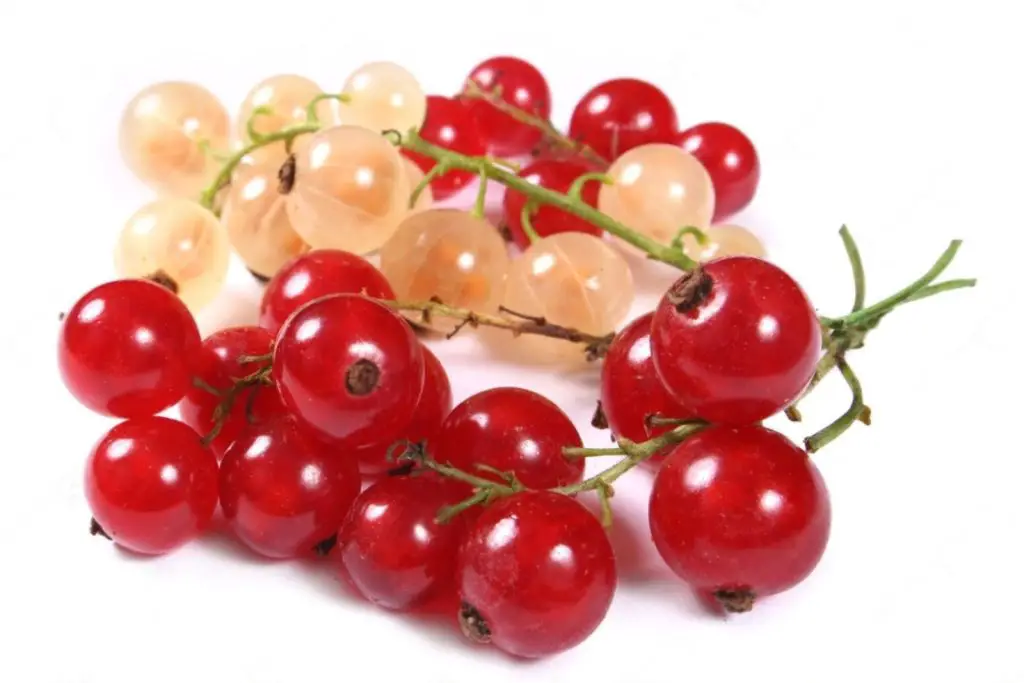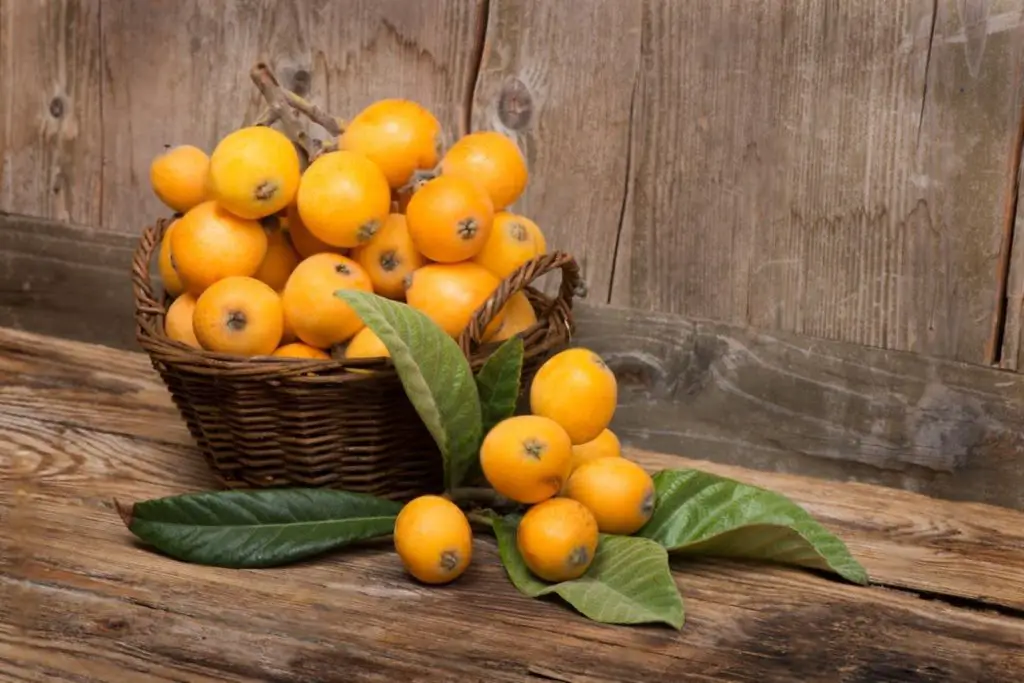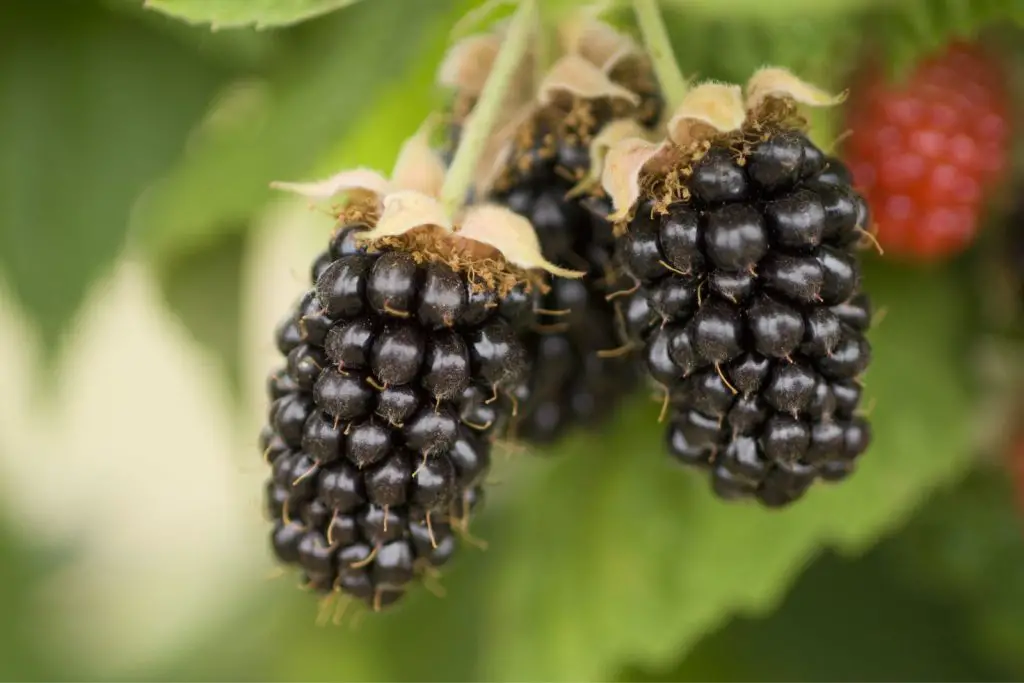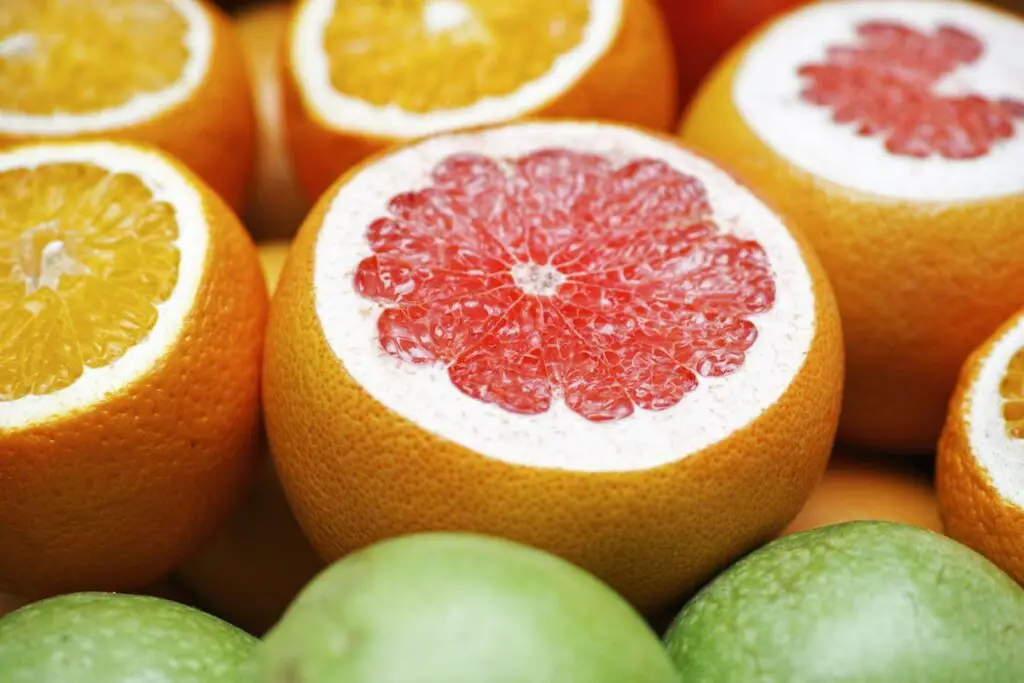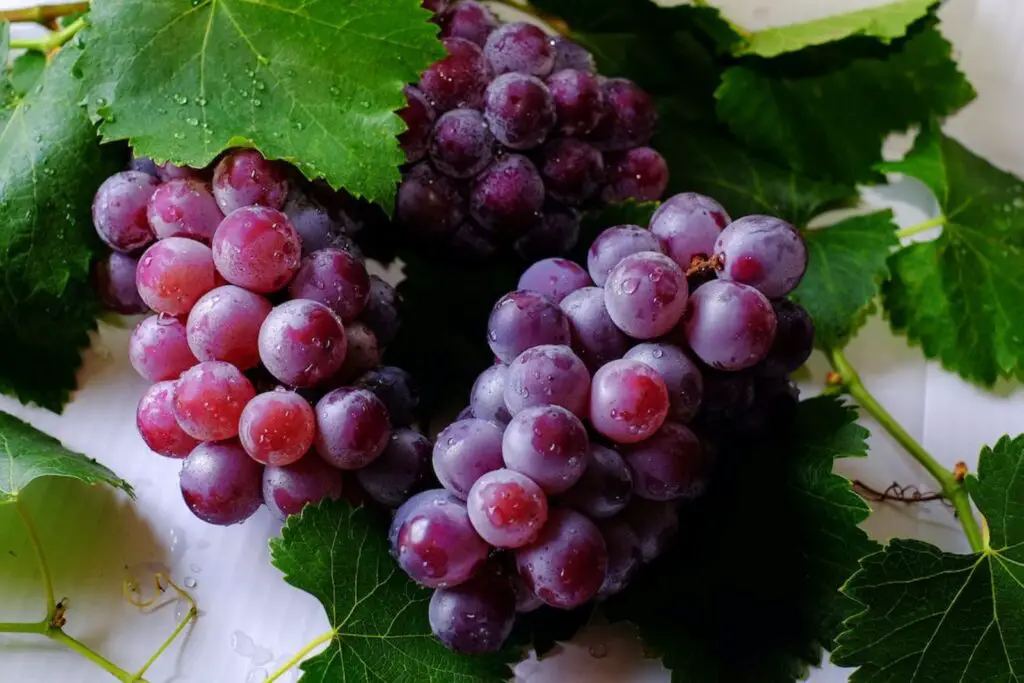Quince, a unique and ancient fruit, has a rich history dating back thousands of years and has enchanted culinary enthusiasts with its distinct aroma and flavor. Resembling a cross between an apple and a pear, quince is known for its vibrant yellow color and tough, puffy skin. Although it is rarely consumed raw due to its astringent and tart taste, quince becomes a culinary delight when cooked or processed into jams, jellies, and preserves. In many cultures, quince is cherished for its symbolic significance and its role in various traditional dishes. However, when quince is in abundance during its peak season or when purchased in larger quantities, it may be challenging to consume them all before they start to spoil or lose their freshness.
Freezing quince emerges as a practical and effective method to preserve its delightful aroma and unique taste, ensuring that each quince retains its firm texture and essential flavor, ready to elevate your culinary creations with the essence of perfectly frozen quince, even when fresh quince is not readily available or when you wish to enjoy this enchanting fruit at your convenience. In this guide, we will explore the best practices for freezing quince, allowing you to savor the richness of this ancient fruit and elevate your culinary repertoire with the essence of perfectly frozen quince, without the need for a fresh purchase or harvest from your garden or local market.
Here are the simple steps to freeze quince:
- Step 1: Select Ripe Quince
- Step 2: Wash and Peel the Quince
- Step 3: Core and Slice the Quince
- Step 4: Prepare a Lemon Water Bath
- Step 5: Blanch the Quince
- Step 6: Drain and Dry the Quince Slices
- Step 7: Arrange the Quince for Freezing
- Step 8: Flash-Freeze the Quince
- Step 9: Package and Seal the Quince Slices
- Step 10: Label and Date the Packages
- Step 11: Store in the Freezer
Step 1: Select Ripe Quince
Selecting ripe quince is essential to ensure that the fruit freezes well and retains its flavor and texture. Here’s why it’s important to choose ripe quince for the freezing process:
- Firmness: Ripe quince should feel firm when gently pressed. Avoid quince that feels too hard or too soft, as these might not have reached their optimal ripeness. Firm quince indicates that the fruit has developed properly and will freeze well without becoming mushy.
- Free of bruises or blemishes: Check the surface of the quince for any signs of bruises, cuts, or blemishes. Bruised or damaged quince may have compromised texture and could spoil faster during freezing. Opt for quince with smooth, unblemished skin to ensure the best results.
- Vibrant color: Ripe quince typically exhibits a bright and vibrant color, which varies depending on the variety. While the skin color can differ between yellow, green, or golden hues, a vibrant color indicates that the quince is at its peak ripeness and will provide a full range of flavors when frozen.
- Pleasant aroma: Ripe quince emits a sweet and aromatic fragrance, which becomes more pronounced as the fruit ripens. Smelling the quince can give you a good indication of its ripeness. If the fruit has a subtle but pleasant aroma, it is likely ripe and ready for freezing.
- Yielding slightly to pressure: Gently press your thumb against the quince. Ripe quince will yield slightly to pressure without feeling overly soft or mushy. This is a sign that the fruit has reached the ideal ripeness for freezing.
Choosing ripe quince ensures that the fruit has developed its full flavor profile and nutritional content. Ripe quince will also freeze more successfully, maintaining its integrity during the freezing and thawing process. By paying attention to firmness, appearance, fragrance, and texture, you can select the best quince for freezing, resulting in delicious and enjoyable frozen quince for your culinary creations.
Step 2: Wash and Peel the Quince
Washing and peeling the quince is an important step in the freezing process as it ensures that the fruit is clean, free from any contaminants, and ready for freezing. Here’s why washing and peeling the quince are necessary:
- Removing dirt and residue: Quince, like many fruits, can accumulate dirt, dust, and other residues during transportation and storage. Washing the quince under running water helps remove any surface impurities, ensuring that the fruit is clean and safe for consumption after freezing.
- Enhancing flavor and texture: The outer skin of quince can sometimes have a slightly tough and fuzzy texture, which may not be enjoyable to eat. Peeling the quince eliminates this rough outer layer, exposing the tender flesh underneath. By doing so, you enhance the overall eating experience and create a smoother texture in your frozen quince.
- Eliminating wax or coatings: Some commercial quince may have a thin layer of wax or coatings applied to enhance their appearance and shelf life. Washing the quince helps remove these artificial coatings, allowing the natural flavors of the fruit to shine through when it’s frozen and later used in recipes.
- Preventing potential contaminants: Even if the quince looks clean, washing it ensures that any hidden pesticides, dirt, or chemicals are removed, reducing the risk of consuming harmful substances.
To wash and peel the quince these are steps to follow::
- Place the quince under running water: Hold the quince under cold running water and gently rub the surface with your hands to wash off any dirt or debris.
- Use a vegetable peeler: Once the quince is clean, use a vegetable peeler to remove the outer skin. Start at the top and work your way down, following the contour of the fruit. Ensure that all areas are evenly peeled, leaving behind only the flesh.
- Rinse again: After peeling, rinse the quince once more under running water to remove any remaining peel particles or residue.
Step 3: Core and Slice the Quince
Coring and slicing the quince are crucial steps in the freezing process as they prepare the fruit for even freezing and make it easier to handle when using it later in recipes. Here’s why coring and slicing the quince are important:
- Removing the core and seeds: The core and seeds of quince can be tough and unappetizing, so removing them is essential to ensure a pleasant eating experience. The core can be quite dense and difficult to chew, while the seeds can be bitter and best avoided. By coring the quince, you eliminate these undesirable parts, leaving only the tender and flavorful flesh for freezing.
- Ensuring even freezing: Slicing the quince into uniform pieces or wedges allows for even freezing. When the quince is frozen evenly, it prevents the formation of ice crystals and helps retain the fruit’s original texture and flavor. This step is especially important when you plan to use the frozen quince in recipes later, as uniformly sized pieces will cook more evenly and yield consistent results.
- Convenience in recipes: By slicing the quince, you make it more convenient to use later in various recipes. Uniform slices or wedges are easier to handle and can be incorporated seamlessly into dishes like pies, tarts, jams, or compotes.
To core and slice the quince these are steps to follow:
- Cut the quince in half: Use a sharp knife to cut the quince in half from top to bottom, following its natural shape. Be cautious while cutting, as quince can be firm, and a sharp knife will make the task easier.
- Remove the core and seeds: After halving the quince, use a spoon or a small knife to scoop out the core and seeds from each half. Ensure that all the tough and bitter parts are removed, leaving behind the sweet and tender flesh.
- Slice into uniform pieces or wedges: Depending on your preference and intended use, slice the quince into uniform pieces or wedges. Aim for consistent thickness to promote even freezing and cooking in later recipes.
- Optionally, soak in lemon water: To prevent the quince slices from browning, you can soak them in a lemon water bath for a few minutes before proceeding with the freezing process.
Step 4: Prepare a Lemon Water Bath
Preparing a lemon water bath is an essential step in the freezing process of quince, as it helps preserve the fruit’s color and prevent undesirable browning. Here’s why this step is important:
- Preventing browning: When quince is exposed to air, its flesh can undergo a natural enzymatic reaction called oxidation, leading to browning. Browning doesn’t necessarily affect the taste or safety of the fruit, but it can make the quince appear less appealing and may impact its overall presentation in recipes. The acid in lemon juice can slow down the oxidation process and help maintain the natural color of the quince.
- Preserving texture and flavor: Browning can also affect the texture and flavor of the quince, making it less visually appealing and potentially altering its taste. By using a lemon water bath, you can keep the quince looking vibrant and fresh, ensuring that it retains its original texture and taste when it’s later used in various dishes.
To prepare a lemon water bath these are steps to follow:
- Mix water and lemon juice: In a bowl, combine water and freshly squeezed lemon juice. The general ratio is about 1 tablespoon of lemon juice per 1 cup of water. The acidity of the lemon juice is what helps slow down the browning process.
- Submerge the sliced quince: Place the sliced quince into the lemon water bath, ensuring that all the pieces are fully submerged. Allow them to soak for a few minutes, typically around 3 to 5 minutes, depending on the thickness of the slices.
- Drain and proceed: After soaking, remove the quince slices from the lemon water bath and drain them thoroughly. You can use a colander or simply let them rest on a paper towel to remove excess moisture.
The lemon water bath is a simple yet effective technique to preserve the visual appeal of quince during the freezing process. By preventing browning, you ensure that the frozen quince looks fresh and appetizing, making it more enjoyable to use in recipes or enjoy on its own once it’s thawed. Additionally, the slight tangy flavor of the lemon juice can complement the natural sweetness of the quince, enhancing the overall culinary experience.
Step 5: Blanch the Quince
Blanching is a crucial step in the freezing process of quince as it helps preserve the fruit’s color, texture, and flavor while also ensuring food safety. Here’s why blanching is an essential step:
- Preserving color: Blanching helps retain the vibrant color of the quince by deactivating enzymes responsible for browning and degradation. This ensures that the frozen quince will look appealing and visually appealing when used in recipes.
- Maintaining texture: Blanching also helps to partially cook the quince slices, which can be particularly beneficial when you intend to use them in recipes later. By blanching, you can help maintain a desirable texture, preventing the quince from becoming mushy or too soft during freezing and thawing.
- Ensuring food safety: Blanching is an effective method to reduce microbial load and potential contaminants on the quince’s surface. The brief exposure to high heat kills off harmful bacteria and pathogens, enhancing the safety of the frozen quince.
To blanch the quince these are steps to follow::
- Bring water to a boil: Fill a large pot with water and bring it to a rolling boil. You’ll need enough water to fully submerge the quince slices.
- Add the quince slices: Carefully add the quince slices to the boiling water. Be cautious not to overcrowd the pot, as you want to ensure that all the slices are fully immersed in the boiling water.
- Blanch for 1-2 minutes: Let the quince slices blanch in the boiling water for about 1 to 2 minutes. The exact time may vary depending on the thickness of the slices and your desired level of partial cooking.
- Transfer to an ice-cold water bath: Once the blanching time is complete, quickly remove the quince slices from the boiling water using a slotted spoon or strainer. Immediately transfer them to a bowl of ice-cold water. This stops the cooking process and helps to preserve the color and texture of the quince.
- Drain and pat dry: After the quince slices have cooled down in the ice water bath, drain them thoroughly. Pat them dry using paper towels to remove excess moisture.
Step 6: Drain and Dry the Quince Slices
Draining and drying the quince slices after blanching is a crucial step to prepare the fruit for freezing. Here’s why draining and drying the quince slices are important:
- Removing excess moisture: After blanching and cooling the quince slices in the ice-cold water bath, they may retain some water on their surface. Excess moisture can lead to the formation of ice crystals during freezing, which may negatively impact the texture and flavor of the frozen quince. By draining and drying the quince slices, you reduce the chances of ice crystal formation and maintain the fruit’s integrity.
- Preventing freezer burn: Freezer burn occurs when the surface of frozen food is exposed to air, leading to dehydration and loss of quality. By patting the quince slices dry, you reduce the moisture content on the surface, minimizing the risk of freezer burn and preserving the overall quality of the frozen quince.
- Facilitating even freezing: Ensuring that the quince slices are dry before freezing helps promote even freezing. If there is excess moisture on the surface, it can create ice buildup and result in uneven freezing, potentially affecting the texture and taste of the quince.
To drain and dry the quince slices these are steps to follow:
- Remove from the ice-cold water bath: Once the quince slices have been sufficiently cooled in the ice water bath to stop the cooking process, carefully remove them using a slotted spoon or strainer.
- Allow excess water to drain: Let the quince slices drain for a few seconds over the sink or a clean towel to allow any excess water to drip off.
- Pat dry with paper towels: Lay the quince slices on a clean and absorbent paper towel. Gently pat them dry with another paper towel, soaking up any remaining moisture on the surface.
- Air dry if needed: If the quince slices are still slightly damp after patting them dry, you can leave them on a clean, dry surface or a fresh paper towel for a few minutes to air dry further.
Step 7: Arrange the Quince for Freezing
Arranging the blanched and dried quince slices in a single layer on a baking sheet is an important step in the freezing process. Here’s why it’s necessary to arrange the quince this way:
- Promoting even freezing: Placing the quince slices in a single layer ensures that each slice is exposed to the cold air in the freezer evenly. This promotes rapid and even freezing, which helps preserve the fruit’s texture and flavor.
- Preventing sticking: If the quince slices are stacked or touching each other during freezing, they might stick together, making it difficult to separate them later. By arranging the slices in a single layer, you prevent them from sticking, allowing you to easily retrieve the desired amount when needed.
- Facilitating storage: Laying the quince slices flat in a single layer on a baking sheet makes it easier to store them in the freezer. The flat, organized arrangement prevents the quince from clumping together, enabling better space utilization and easier stacking of multiple baking sheets if necessary.
To arrange the quince for freezing these are steps to follow:
- Prepare a baking sheet: Line a baking sheet with parchment paper to prevent the quince slices from sticking to the surface.
- Lay the quince slices in a single layer: Place the blanched and dried quince slices on the parchment-lined baking sheet, ensuring they are not touching each other. Leave a small space between each slice to maintain separation.
- Avoid overlapping: Be careful not to overlap the quince slices, as this can also lead to sticking and hinder even freezing.
- Use multiple baking sheets if needed: Depending on the quantity of quince slices, you may need to use multiple baking sheets to ensure that they are all arranged in a single layer without touching.
- Freeze the baking sheet: Once the quince slices are arranged on the baking sheet(s), place the sheet(s) in the freezer and let the quince slices freeze until solid.
Step 8: Flash-Freeze the Quince
Flash-freezing is a rapid freezing method used to preserve the quality of the quince slices during the freezing process. Here’s why flash-freezing is an important step:
- Preventing ice crystal formation: Flash-freezing involves exposing the quince slices to very cold temperatures quickly. This rapid freezing minimizes the formation of large ice crystals, which can damage the cell structure of the fruit and result in a loss of texture and flavor.
- Preserving freshness and nutrients: Flash-freezing locks in the quince’s natural freshness, flavor, and nutrients at their peak. By freezing the slices quickly, you ensure that the quince retains its original quality, making it just as delicious and nutritious when thawed as it was when fresh.
- Shortening freezing time: Flash-freezing allows the quince slices to freeze faster, reducing the overall freezing time. The quicker freezing process also reduces the risk of freezer burn and helps maintain the fruit’s texture and taste.
To flash-freeze the quince these are steps to follow:
- Place the baking sheet in the freezer: After arranging the quince slices in a single layer on the parchment-lined baking sheet, carefully place the sheet in the freezer.
- Monitor the freezing time: Let the quince slices freeze for about 1-2 hours or until they are completely solid and not tacky to the touch. The exact freezing time may vary depending on your freezer’s temperature and the thickness of the quince slices.
- Check for firmness: To ensure that the quince slices are adequately frozen, gently touch one or two slices. They should feel firm and not sticky or soft.
- Transfer to freezer-safe containers or bags: Once the quince slices are fully frozen, quickly transfer them from the baking sheet to freezer-safe containers or resealable plastic bags. Remove any excess air from the containers or bags before sealing to prevent freezer burn.
Step 9: Package and Seal the Quince Slices
Packaging and sealing the flash-frozen quince slices properly is a critical step in the freezing process to maintain the fruit’s quality and prevent freezer burn. Here’s why this step is essential:
- Preventing freezer burn: Freezer burn occurs when the surface of frozen food is exposed to air, causing dehydration and deterioration of the texture and flavor. Proper packaging and sealing help create a barrier between the quince slices and the air, reducing the risk of freezer burn and preserving the fruit’s integrity.
- Maintaining freshness: Airtight packaging prevents moisture loss and keeps the quince slices fresh throughout their time in the freezer. This ensures that the fruit retains its natural flavors and textures, making it enjoyable to use in recipes or eat on its own after thawing.
- Efficient storage: Using airtight containers or resealable plastic bags allows you to store the quince slices compactly and efficiently in the freezer. It also prevents any potential cross-contamination with other foods in the freezer.
To package and seal the quince slices these are steps to follow:
- Transfer the slices: Carefully transfer the flash-frozen quince slices from the baking sheet into airtight freezer-safe containers or resealable plastic bags.
- Remove excess air: Before sealing the containers or bags, try to remove as much air as possible. Excess air can lead to freezer burn and negatively impact the quality of the quince slices. You can use a vacuum sealer, if available, to achieve a better air-free seal.
- Seal the containers or bags: Ensure that the containers or bags are tightly sealed to prevent air from entering. If using resealable plastic bags, press out as much air as possible before sealing them shut.
- Label the packages: Clearly label each container or bag with the contents (quince slices) and the date of freezing. This helps you keep track of the age of the frozen quince and use the oldest ones first.
- Store in the freezer: Place the sealed and labeled packages in the freezer. Make sure they are placed in a flat position to avoid any potential leakage.
Step 10: Label and Date the Packages
Labeling and dating the packages of frozen quince slices is a crucial step to maintain organization and ensure that you use the quince in the proper order. Here’s why this step is important:
- Keeping track of contents: Labeling each container or bag with the contents (quince slices) helps you easily identify what is inside without the need to open or inspect every package. This is particularly helpful if you have multiple types of frozen fruits in your freezer.
- Tracking freezing date: Adding the date of freezing to the label allows you to keep track of how long the quince slices have been in the freezer. This is essential for managing their shelf life and ensuring you use the oldest ones first to maintain the best quality.
- Preventing food waste: By using the oldest frozen quince first, you avoid the risk of letting them stay in the freezer for too long and potentially losing their quality or flavor. Labeling and dating the packages help you practice proper food rotation, reducing the likelihood of food waste.
To label and date the packages these are steps to follow:
- Use adhesive labels or tape: Write the contents (quince slices) and the date of freezing on adhesive labels or directly on resealable plastic bags using a marker.
- Be specific: Include enough information on the label to easily identify the package later. For example, you can write “Quince Slices – frozen on [date]” to make it clear what’s inside and when it was frozen.
- Place the label on the package: Attach the label to the container lid or side, or stick it on the front of the resealable plastic bag.
- Keep a record: Consider maintaining a separate record or freezer inventory list with details of the frozen quince packages, including the date of freezing and the quantity in each package. This can be helpful for planning meals and tracking inventory.
Step 11: Store in the Freezer
Storing the labeled quince packages in the freezer is the final step in the freezing process. Proper freezer storage ensures that the quince slices remain fresh, safe to eat, and enjoyable for an extended period. Here’s why this step is crucial:
- Maintaining quality: Placing the labeled quince packages in the freezer preserves the fruit’s texture, flavor, and nutritional value. The low temperatures in the freezer inhibit the growth of microorganisms and slow down enzymatic reactions, ensuring that the quince remains in good condition for an extended period.
- Preventing freezer burn: By storing the quince slices in airtight containers or resealable plastic bags, you create a protective barrier against air exposure, reducing the risk of freezer burn. Properly sealed packages maintain the quince’s moisture content and prevent dehydration, which can cause freezer burn.
- Extended storage time: When stored correctly, the frozen quince can maintain its quality for up to 12 months. This allows you to enjoy the fruit’s delicious taste and versatility throughout the year, even when quince is out of season.
To store the quince packages in the freezer these are steps to follow:
- Organize the freezer: Make sure your freezer is clean and organized before placing the quince packages inside. Arrange them in a way that allows easy access and prevents any damage or squashing.
- Store in a flat position: Place the labeled quince packages in the freezer in a flat position. This ensures even freezing and prevents any potential leakage from the containers or bags.
- Avoid frequent temperature fluctuations: Try to avoid frequent opening and closing of the freezer, as this can lead to temperature fluctuations and affect the quality of the frozen quince.
- Follow the FIFO rule: FIFO stands for “first in, first out.” When you need to use the quince slices, prioritize using the oldest packages first to maintain freshness and minimize food waste.
- Maintain freezer temperature: Keep your freezer at or below 0°F (-18°C) to ensure optimal food preservation. Monitoring the freezer’s temperature regularly helps maintain the quince’s quality over time.
Other related questions
How do you defrost quince?
To defrost quince, transfer the frozen slices from the freezer to the refrigerator and let them thaw slowly for several hours or overnight. Alternatively, place the quince slices in a sealed plastic bag, removing excess air, and submerge them in cold water. Change the water every 30 minutes until fully thawed. Avoid using hot water or microwave to defrost quince, as these methods can lead to uneven thawing and compromise the fruit’s texture.
Can you refreeze quince?
Refreezing quince is not recommended, as it can lead to a loss of quality and safety. Once quince has been thawed, it is best to use it promptly and avoid refreezing to preserve its texture and taste. Refreezing can also increase the risk of bacterial growth and compromise the overall freshness of the fruit.
How do I know if the quince has gone bad after being frozen?
To determine if frozen quince has gone bad, check for signs of spoilage such as a sour or off odor, mold growth, or unusual texture (mushiness or freezer burn). If the quince appears discolored or has an unpleasant smell, it may be unsafe to consume. Trust your senses and discard the quince if any doubts arise about its quality or safety.
Can you freeze quince seeds for planting later?
Freezing quince seeds for planting later is not recommended. Quince seeds have specific germination requirements, and freezing may damage their viability. To ensure successful germination, it is best to plant fresh, dry seeds obtained from ripe quince fruit immediately after extraction, following proper planting and growing procedures.
Is it possible to freeze quince juice or quince-infused liquids?
Yes, it is possible to freeze quince juice or quince-infused liquids. To freeze quince juice, extract the juice from fresh quince, strain it to remove any solids, and pour it into airtight containers, leaving some room for expansion. For quince-infused liquids, such as quince-infused water or syrup, cool the liquid, strain out any fruit pieces, and freeze it in appropriate containers. Properly stored, frozen quince juice or quince-infused liquids can be preserved for several months without compromising taste and quality.
Can you freeze quince leaves for herbal purposes?
Freezing quince leaves for herbal purposes is not recommended. Freezing can alter the texture and cellular structure of the leaves, leading to a loss of their medicinal properties and aromatic qualities. For herbal purposes, it is preferable to air-dry quince leaves in a cool, dry place away from direct sunlight, as this method better preserves their essential oils and beneficial compounds.

